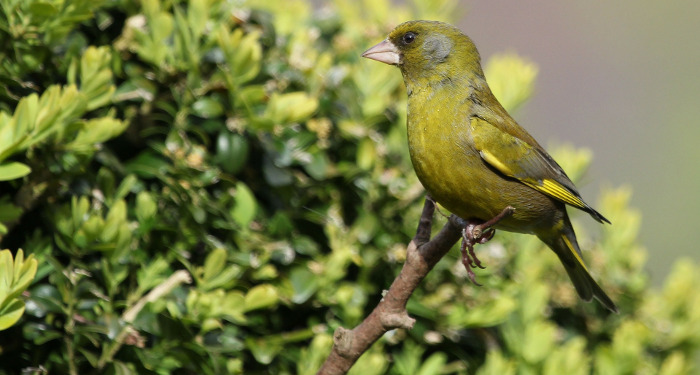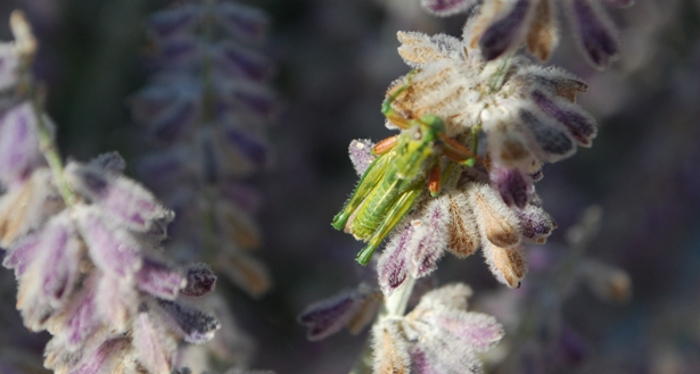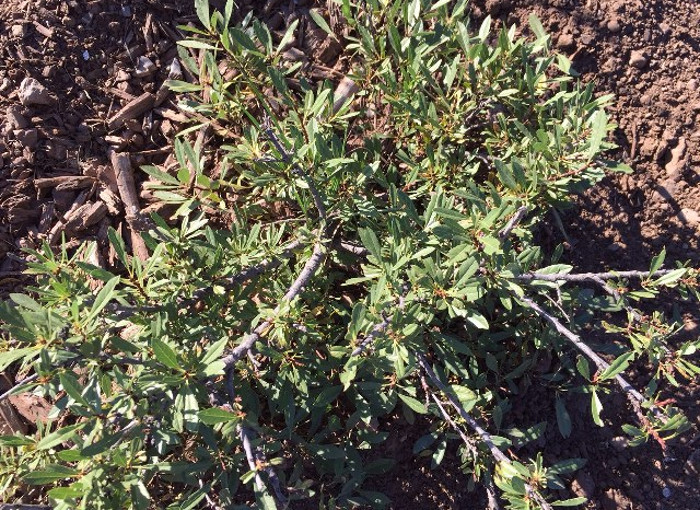It’s easy to attract birds to your yard with feeders, but having a friendly bird habitat is even better. We’re fortunate to have some help from nature in the form of a nearby river and trees. Many bird species can nest or fly to the larger trees when evading us or our dogs. But they also love to hang out in the garden right off our patio, because we have a few shrubs that meet their basic needs of food and shelter. Naturally, needs differ by bird, but many eat fruits, berries and seeds.

As fall arrives, we’re even more aware of how plants attract both native and migrating birds. I looked out my window the other day and saw at least 20 sparrows feeding on the seed heads of a weed/grass that I have been meaning to pull from a garden bed. I felt a little better about being behind. Although trees are important for bird nesting and shelter, so are shrubs. Here are five water-wise choices that help feed, shade or protect birds.
Cotoneaster
The Cotoneaster species includes shrubs that need a little more water until established than some native low-water plants. They’re cold hardy to zone 3 and actually fare better in high desert and mountain climates. Some cultivars (namely Rockspray) grow more wide than high, and these are the ones the sparrows at our place love. The leaves are tiny, but the plant is sort of prickly and since the branches cross over one another, it really fills in well. The birds can enjoy the late summer berries and perch a few feet off the ground.

This white-crowned sparrow is hidden pretty well on a cotoneaster even in winter. In spring, 20 or more sparrows perch here, distracting me from working.
Russian Sage
Russian sage (Perovskia atriplicifolia) is known as an attractor of bees, butterflies and hummingbirds while its gorgeous and fragrant lavender stalks are in bloom, but I’ve seen other small birds feed on the seed heads as they dry. And since this shrub is best cut back in spring, it can help feed birds all winter.

Right now, a darn grasshopper appears to be eating our Russian sage. The stalks are beginning to dry.
Pawnee Buttes Sand Cherry
Last week, I mentioned the Western sand cherry (Prunus besseyi) as one of five water-wise shrubs that works well in high-desert gardens. The Pawnee buttes is a low-growing form of the sand cherry, which likely won’t produce enough fruit for a pie, but plenty of dark, ripe berries to feed birds. I also love the twisting branches. It just looks like a native plant you might encounter walking around the New Mexico desert, but in spring it has gorgeous white flowers that are slightly smaller than those on our cherry tree, but just as striking.

The Pawnee buttes sand cherry is a low-growing, twisted version of the Western sand cherry.
Wild Roses
I mention native roses often in my plant lists because they are amazing low-water plants. The Woods’ rose (Rosa woodsii) in particular is a Southwest native that grows in all sorts of terrain from as low as 2,800 feet to more than 10,000 feet in altitude. It blooms in spring or early summer with no supplemental watering and attracts birds all year long. We have a hummingbird that I am pretty sure has deemed one native rose as his territory, and I love watching birds land on the thorny stems. I doubt any nearby cats will venture up there after them! Best of all, the Woods’ rose leaves hundreds of hips on the plant for birds and other critters to enjoy all fall and winter.
The hips have plenty of value for people, but this year, we will leave them on the rose. The only drawback to native roses is that they need a deep pruning/shaping in early spring.

Birds can feast on these rose hips all winter and hide in or under the bushy, thorny plant.
Serviceberry
The Western serviceberry (Amelanchier alnifolia) is another member of the rose family. Native to the Southwest, the plant, which also is commonly called a shadbush, produces white flowers in spring and early summer berries that are similar to blueberries. Although people can make jams from the berries, they are pretty seedy. So I’d prefer to leave them for the birds, while I enjoy the flowers and year-round leaf colors. The drought-tolerant shrub can be shaped into a hedge and grows in zones 2 through 9.
 |
Author Teresa Odle - Published 12-10-2020 |
